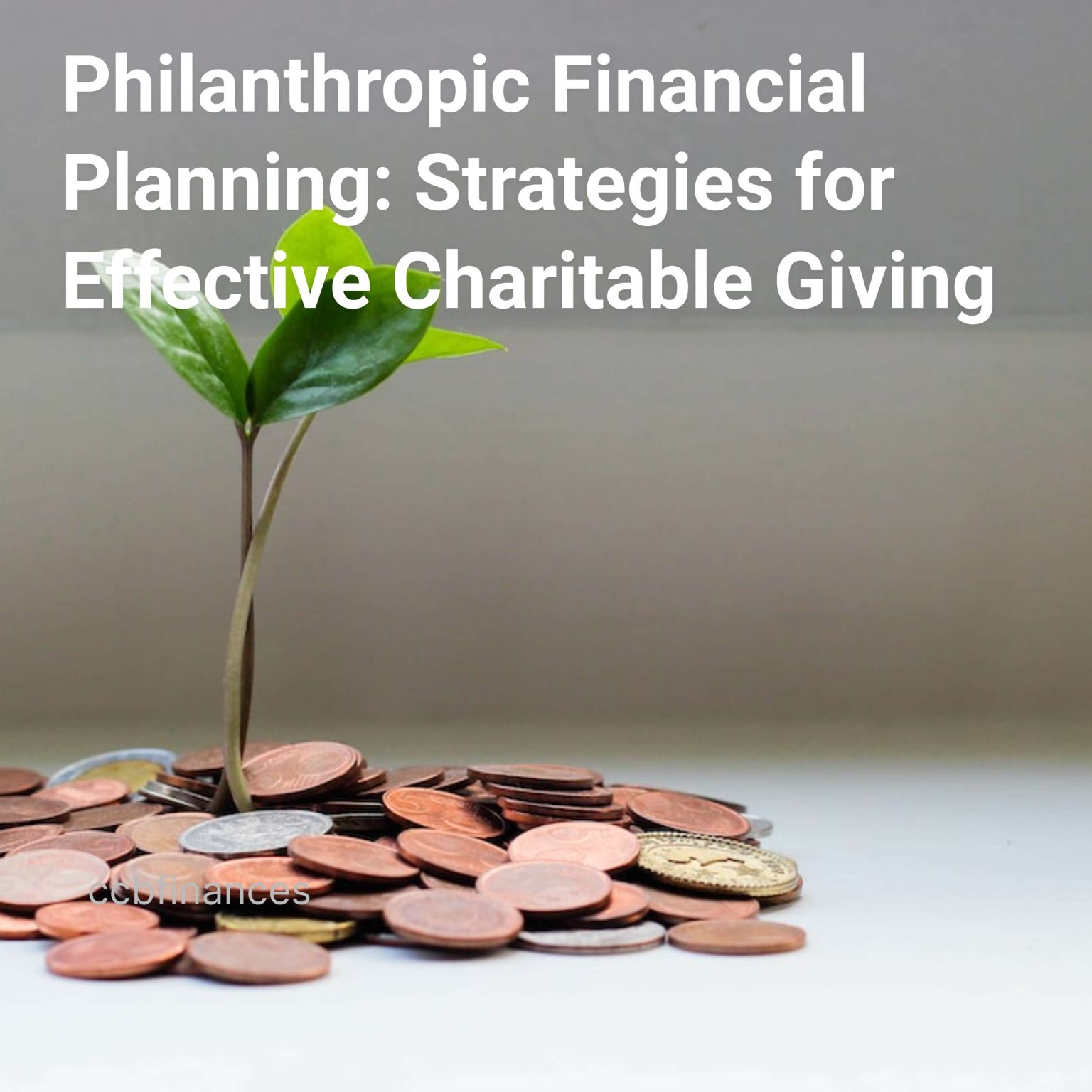Philanthropic financial planning is more than just managing wealth; it’s about harnessing financial resources to create a lasting impact on the causes and communities we care about most. In a world where charitable giving plays an increasingly vital role in addressing social challenges, effective strategies for philanthropy are essential. This blog post explores the dynamic intersection of finance and altruism, offering insights into how individuals can leverage their financial resources through philanthropic financial planning. From defining charitable objectives to navigating tax considerations, we’ll delve into key principles and practical approaches to maximize the effectiveness of your charitable giving endeavors.
Understanding Philanthropic Financial Planning
Philanthropic financial planning encompasses the strategic integration of charitable giving into an individual’s overall financial strategy. It goes beyond sporadic donations, aiming to maximize the impact of one’s philanthropic endeavors while aligning them with personal values and financial goals. At its core, philanthropic financial planning involves thoughtful consideration of how to effectively deploy financial resources to support causes and organizations that reflect one’s passions and priorities. By taking a deliberate approach to philanthropy within the broader context of financial planning, individuals can ensure their giving is both meaningful and sustainable over the long term.
Identifying Your Charitable Objectives
Central to philanthropic financial planning is the process of identifying and defining charitable objectives. This begins with introspection, as individuals reflect on their values, interests, and the issues they are most passionate about addressing. Whether it’s supporting education, healthcare, environmental conservation, or social justice initiatives, clarifying charitable goals provides a roadmap for guiding philanthropic efforts. Through this process, individuals can articulate their philanthropic mission and establish clear objectives that will inform their giving strategy and guide decision-making.
Researching and Evaluating Charitable Organizations
Once charitable objectives are established, the next step in philanthropic financial planning is researching and evaluating potential charitable organizations. With countless nonprofits and charities vying for support, it’s essential to conduct due diligence to ensure donations are directed toward reputable and impactful organizations. Factors to consider include the organization’s mission, financial transparency, track record of success, and alignment with personal values. Various tools and resources are available to aid in this process, from charity rating websites to independent evaluations and donor networks.
Strategic Giving Techniques
Philanthropic financial planning offers a range of strategic giving techniques to maximize the impact of charitable contributions. Direct donations provide immediate support to nonprofits, while donor-advised funds offer flexibility and tax benefits by allowing donors to recommend grants over time. Charitable trusts and endowments enable individuals to create a lasting legacy of giving, while planned giving vehicles such as bequests and charitable gift annuities provide tax advantages and estate planning benefits. By leveraging these strategic giving techniques, individuals can amplify the effectiveness of their philanthropy and achieve their charitable objectives more efficiently.
Tax Considerations and Benefits
Tax considerations play a significant role in philanthropic financial planning, as charitable giving often offers valuable tax benefits. Contributions to qualified charitable organizations may be deductible on income tax returns, reducing taxable income and potentially lowering tax liabilities. Additionally, certain giving vehicles, such as donor-advised funds and charitable trusts, offer specific tax advantages, such as capital gains tax avoidance and estate tax reduction. Understanding the tax implications of charitable giving allows individuals to optimize their philanthropic strategies while maximizing tax benefits within the confines of applicable tax laws and regulations.
Impact Measurement and Evaluation
Effective philanthropy requires ongoing measurement and evaluation of impact to ensure resources are being deployed efficiently and effectively. Impact measurement involves tracking and assessing the outcomes and results of charitable investments, such as improvements in social or environmental conditions, changes in beneficiary outcomes, or advancements toward stated goals. Evaluation enables donors to gauge the effectiveness of their giving strategies, identify areas for improvement, and make informed decisions about future philanthropic investments. By prioritizing impact measurement and evaluation, individuals can enhance the effectiveness and accountability of their philanthropic efforts.
Integrating Philanthropy into Financial Planning
Philanthropic financial planning is most effective when seamlessly integrated into an individual’s overall financial plan. By incorporating charitable giving goals and strategies alongside other financial priorities, such as retirement planning, investment management, and estate planning, individuals can ensure their philanthropy is aligned with their broader financial objectives. This holistic approach enables individuals to balance their philanthropic aspirations with other financial responsibilities while optimizing tax efficiency, preserving wealth, and maximizing the impact of their charitable contributions over time.
“Give, and it will be given to you.“
In conclusion, philanthropic financial planning offers a strategic framework for maximizing charitable impact while aligning with personal values and financial goals. By integrating philanthropy into overall financial planning, individuals ensure purposeful, sustainable giving. From defining objectives to strategic giving techniques and impact measurement, this approach empowers donors to make a meaningful difference. Through thoughtful planning and strategic giving, individuals can leave a lasting legacy of generosity and contribute positively to the causes and communities they care about most.
If you want to learn more about finance and other related subjects, click here.
